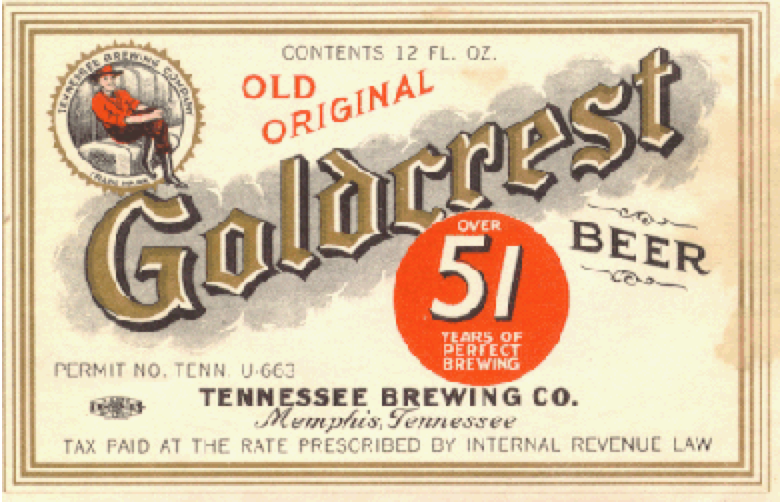Profile #3 in StoryBoard’s look at progress in historic preservation over the last decade
HISTORIC PRESERVATION
By Gordon Alexander
It could be said that it was beer, suds, that built the building, and that it was one evening of suds that ultimately saved it. For if not for a six-week beer garden event let by local entrepreneurs, this enduring symbol of industrial-age Memphis at the south end of the South Bluffs Warehouse Historic District might have been hosting backhoes instead of beer taps.

* * * * *
The brewery business was launched in 1877 by G.H. Herbers as The Memphis Brewing Company. In 1885 it was bought by J.W. Schorr, Casper Koehler and Associates and soon they made it into one of the largest breweries of the era. The red-brick Tennessee Brewery was erected in 1890 at 477 Tennessee Street at Butler Ave., in the “Richardsonian” Romanesque style. The structure is basically unchanged from that time, other than renovations performed to keep the building intact for possible further development. The bottling plant for example was added on to the building in 1938.
The first beer produced by the brewery was a Pilsener, but they also produced other styles, as well as two new brands called Columbian Extra Pale and Erlanger. At one point, more than 1500 employees worked at the brewery and by 1903 production was up to 250,000 barrels per year, making it the largest brewery in the South, before Prohibition shut down alcohol production from 1920 to 1933. Schorr, Koehler and Associates managed to survive Prohibition, changing its name to the Tennessee Beverage Company and producing NIBs (Non-Intoxicating Beverages) before temporarily closing.
After the end of Prohibition, the plant was reopened by J.W..’s son, John Schorr. Soon production was up to full speed and they were marketing their popular Goldcrest brand. After 1938 the beer became known as Goldcrest 51, to honor their more than 51 years in the brewing business. Goldcrest 51 was produced in bottles until 1947, when they started using aluminum cans.

Due to rising costs and competition, the brewery ceased all operations in 1954 and was purchased by the Karchmer family for its scrap metal business, which operated until 1981. With Karchmer and Newburger listed as owners, the Memphis Landmarks Commission applied for and successfully added the building to the National Register of Historic Places, in the fall of 1980 (see listing here).

* * * * *
In 1995, ownership was transferred from Marvin Ratner to Brewery Tennessee LLC and in 1999 Brewery Tennessee sold the property to developer Kevin Norman under The Tennessee Brewery LLC for the sum of $350,000. Norman brought the structure up to code to save it from impending demolition.
For over thirty years from 1981 on it sat empty. During the abandoned years it made a brief appearance in the film “Walk The Line” and was often described as one of the most haunted places in Memphis. Photographer Walter Arnold received permission to record this period in photographs for his series The Art of Abandonment in March of 2013.
During these years the building appeared on Memphis Heritage’s list of The Ten Most Endangered Historic Buildings, including both the 2008 and 2011 lists. But it was also during these years when South Main and South Bluffs saw a huge resurgence in interest in working, playing, and, importantly, living in downtown Memphis.
And yet in January of 2014, owner Norman announced that the building would be demolished if new owners could not be found. When word of this began circulating, Memphis Heritage held a public meeting to discuss methods of utilizing the building as a venue to stimulate interest and find an interested buyer. This led a small group of local entrepreneurs (restauranteur Taylor Berger, commercial realtor Michael Tauer, and communication specialist Doug Carpenter) to propose setting up a beer garden with food trucks and live music on the ground floor in the brewery’s courtyard.

* * * * *
“Tennessee Brewery Untapped” as it was called ran for six weeks, attracting up to 35,000 Memphians and generating immeasurable excitement. It was here where Bill Orgel and his son, Benjamin, found themselves in the spring of 2014, sitting at a table with friends. The Orgels were so impressed with the Brewery’s magnificent Romanesque architecture that Billy looked at Ben and said, “We should buy this building.”

* * * * *
They made inquiries and followed through with plans to convert the building into apartments by purchasing the building for $825,000. In April 2016, the Orgels broke ground on a six-story parking garage and followed up with 148 units in the historic brewery and a new building attached on the northeast side. 121 new apartments at 496 Tennessee Street opened in 2020, on the now-former vacant lot at the southeast corner of Butler and Tennessee.
In April of 2015, for a weekend called “Tennessee Brewery: The Revival,” beer enthusiast Kenn Flemmons of Little Rock resurrected Goldcrest 51 beer with Blue Pants Brewery in Alabama. Flemmons had held the beer’s original recipe for years as part of his massive collection of Goldcrest paraphernalia. (See Bianca Phillips’ Memphis Flyer story here.)
And the Tennessee Brewery, saved by suds, endures for another generation and another era. <>
* * * * *
Mark Fleischer contributed to this story from the Brewery’s National Register Listing and the notes of Newman to Now project director Emily Cohen.
This is the third profile in our series on progress in historic preservation over the last decade. To read more in this series, please visit the main article here.
Help support projects and stories like this one and become a StoryBoard Sponsor today! See here for details. And be sure to subscribe to our print edition here.

